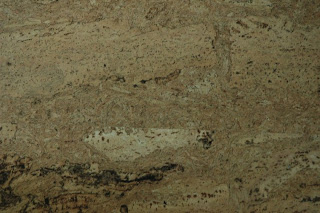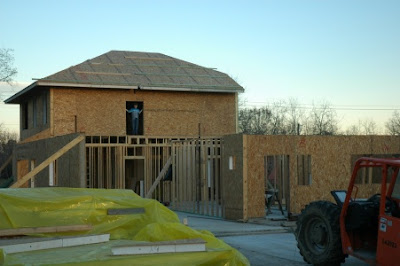Welcome to my ‘green’ house blog. My family and I designed and built our dream home using green architecture techniques inside and out. When we started this project back in Jan. 2005, we had no idea what we were getting into – we just knew building an energy efficient home was the right thing to do. Did you know that in the United States alone, buildings account for:
• 70% of electricity consumption,
• 39% of energy use,
• 39% of all carbon dioxide (CO2) emissions,
• 40% of raw materials use,
• 30% of waste output (136 million tons annually), and
• 12% of potable water consumption.
Everyone seems so focused on their gasoline consumption when they probable spend more on energy for their homes. So we did what we thought would have the biggest long-term impact – build a new home from scratch using green architecture techniques. So we hired one of the most experienced green architects, Laverne Williams of Environment Associates (http://environmentassoc.com/), to assist us in our design decisions. Laverne’s ‘Design for Passive Sustainability’ concepts and practices were very appealing to us. Our trials and tribulations have been worth it – we love our new home and everything we designed into has worked. We learned so much during this process -our hope is that others will learn from our experiences through this blog.
From my experiences I have seen three different green philosophies: high-tech green, extreme green and common sense green.
When I tell someone I’ve built a green house, usually the first thing they ask me is about my solar panels. We didn’t install any solar panels because they are not cost feasible yet. They are expensive and risky – one good hailstorm or hurricane and the panels are ruined. We also looked at wind power. You can get a complete turnkey wind turbine for about $10,000 ready to plug into the grid. But you have to have an average of 8 mph winds to make it cost feasible – we don’t in the Houston area. We also evaluated A/C systems that use the coolness of the earth to cool the coils. This seemed like a good technology especially since most of our electric bills are for running the A/C – until we found out we would have to drill a hole several hundred feet deep. The drilling made the system not cost effective. So the only high-tech things we did were very efficient A/C – heat pump system, energy efficient appliances, tankless water heaters and compact fluorescent bulbs. As energy producing technologies evolve, we will continue to evaluate them. For the future, I’ve allocated space in the back yard to build a gazebo that will have solar panels on the roof.
Extreme Green
Some people take green to an extreme. If one wants to go extreme green, look at the US Green Building Council (USGBC) Leadership in Energy and Environmental Design (LEED) certification process at:
http://www.usgbc.org/ - home page
http://www.usgbc.org/DisplayPage.aspx?CMSPageID=222 - LEED rating system info
http://www.usgbc.org/DisplayPage.aspx?CMSPageID=3638 - LEED rating system info
http://www.usgbc.org/ShowFile.aspx?DocumentID=3658 - LEED Home Checklist
The Home checklist is a good document to educate yourself on what the USGBC thinks is important – but if you read the document you will see the extent of what is covered under being ‘green’. Everything from whether you stockpiled the dirt scraped for the foundation to shading 50% of your driveway with trees to the use of VOC free paints and glues inside your home. We evaluated participating in the LEED process, but at the time it was going to cost us about $2,000 to get certified - so we decided to put that $$$ into the house instead. It looks like the LEED certification process has become more affordable now. Based on the checklist, I think we could have easily gotten a silver level certification. But LEEDs is not for everyone because it is expensive to follow. I would highly recommend reviewing the LEED process if for nothing else to educate yourself on what is covered under the label of ‘green’.
Common Sense Green
This is a philosophy that I think is just starting to hit the mainstream. To me, common sense green means using the environment to your advantage. My in-laws built a house in central Pennsylvania that used the same building materials as my old house in Houston, TX. The climates and terrain are completely different but the build technologies were the same – this makes no sense. In an effort to standardize and reduce construction costs, the building industry has built houses that are very energy inefficient and cost the home owner big $$$ long term. So we looked at house designs from the 1800s – before electricity and central heating/cooling. Our pioneer forefathers had to use the environment to their advantage to survive. As an example, one person we talked to said his grandparents had two farm houses – one for the summer and one for the winter - each house had different design techniques suited for the different seasons. Through our research we discovered energy efficient design treasures such as dogtrot houses and breeze rooms that we easily incorporated into our modern home design. This is where we spent most of time and effort, incorporating these common sense green techniques into our design. Our goal was to create a house that used as little energy as possible, and then over time as other technologies become cost effective, add on energy producing technologies. Given we were designing for the south Texas climate (mild winters and hot, humid summers) our common sense green design includes:
Only 2 windows facing east and 2 facing west – with 8 windows facing south and 9 facing north. Since the prevailing winds are from either the south in the summer and north in the winter, we maximized our air flow (north and south facing windows) while minimizing the direct sunlight into house (east and west facing windows).
3 ft eves all around the house to shade the house as much as possible in the summer. The eves are the correct length so in the winter months we get sunlight in the southern facing windows to help heat the house.
Even though the front of the house faces west, we minimized the profile of the west facing part of the house by putting a 10 ft porch and a three car garage in front to block as much sun as possible. For the west facing windows, we raised them up as high as possible and put them under 10 ft front porch. We only get a little direct sunlight into the west facing windows late in the evening.
White metal roof to reflect the hot Houston sun.
Pella high effcient doors and windows (Oracle employees get a 5% discount on Pella Doors and Windows)
No fireplace - its not needed in our climate. We used the fireplace in our old house only a couple of times a year. Since fireplace flues have to be able to sustain immense heat, they are usualy made of metal and not well insulated. A fireplace is effectively a badly insulated hole to the outside. In our old house, the room with the fireplace was usually the coldest room in the house by 4-5 degrees in the winter - when we didn't have a fire going.
Two breeze rooms – the master bedroom and the music room.
A dogtrot design through the middle of the house that maximizes and controls the flow of wind throughout the house.
We did several other things to make our home as energy efficient as possible – all described below. I hope you enjoy my blog and find it helpful and educational. To get the most out of this blog, please start by looking at the bottom entry on the right menu bar (first entry chronologically) and work your way up the menu to the last entry. Click on the triangle next to the July entry to expand the list to see then all.
I look forward to all your questions and comments.
Ron Mayfield






























